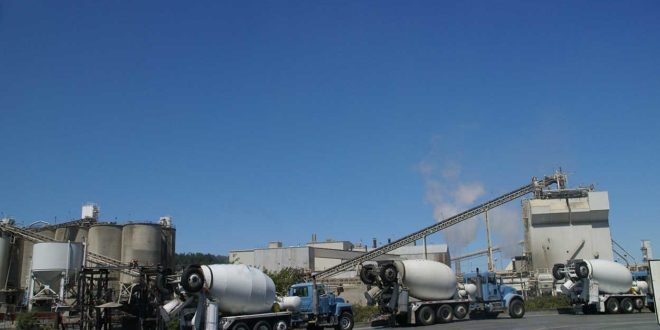Concrete is the second most widely utilized substance on the planet behind water. Developers use concrete – and its primary ingredient, cement – to build roads, foundations, bridges, and other structures.
Environmentalists are targeting the material’s manufacturing process because of its large carbon footprint. Eco-conscious engineers are following the sustainability path by integrating renewables into cement and concrete production.
Before assessing the solar cement manufacturing process, individuals must explore the environmental problems associated with traditional concrete production.
Sustainability Limitations in Concrete Manufacturing
Concrete and cement production operations produce nearly 8% of global GHG emissions. The manufacturing process relies on fossil fuels for energy, which release greenhouse gasses during combustion. Manufacturing professionals use a portion of the energy to power kilns.
They use the kilns to trigger a chemical reaction in limestone. Professionals produce cement by grinding limestone into dust and baking it into clay. The fossil fuels powering the kiln produce nearly a third of the emissions related to concrete production.
Another carbon-intensive part of cement manufacturing occurs when manufacturers combine limestone with clay. Heating the two components together releases nearly 600 kilograms of carbon dioxide per ton of cement. Environmentalists are using solar power to shrink the carbon footprint of manufacturing facilities and produce sustainable cement.
Can Solar Solve the Carbon Problem?
One startup funded by the Gates Foundation discovered a way to produce cement with solar energy. They developed a system using concentrated solar power to generate large quantities of heat. The startup’s team of engineers placed an oven on top of the solar production tower to access as much energy as possible.
Manufacturing professionals are starting to use the oven as a kiln for cement production. The technology can minimize the energy-related emissions in the production process. Enhancing cement manufacturing’s sustainability is essential to green construction.
Although concrete and cement production has a large carbon footprint, its place in construction is more sustainable than other building materials. Concrete has less of an ecological impact compared to asphalt. Asphalt’s dark color attracts solar radiation and produces the urban heat island effect.
Creating low-emission cement can enhance sustainable development. One sustainability limitation that solar kins are unable to target derives from limestone itself. When the material reaches high temperatures, it releases carbon dioxide.
Production professionals must use other concrete manufacturing practices to shrink the construction industry’s footprint. There are a few alternative production methods that can enhance conservation efforts. The first decarbonization practice utilizes recycled materials.
Recycled Concrete
Urban developers and city planners can reclaim old concrete from construction waste produced during road and bridge updates. Researchers at the University of California, Davis, are developing a concrete recycling process that absorbs excess carbon emissions. If production professionals can repurpose old building materials at a larger scale, they can enhance global sustainability and produce a circular economy.
Vegetable Fiber Cement
Another cement production alternative uses vegetable fibers. A team of researchers in the U.K. discovered that vegetable roots contain nanoplatelets that make concrete stronger. A mix of carrot roots can replace a portion of cement in concrete manufacturing.
Lessening the industry’s reliance on cement can reduce greenhouse gas emissions. Professionals can also use food waste to generate the building component, reducing methane pollution in landfills.
Manufacturers may additionally use carbon capturing and storage (CCS) technology to shrink concrete’s carbon footprint.
Pair Manufacturing Facilities With CCS Systems
Solar cement manufacturing facilities can use carbon-capturing technology to reduce atmospheric emissions. The system absorbs greenhouse gases and stores them beneath the earth’s surface. Vegetation naturally processes the emissions through photosynthesis and converts it into pure oxygen.
The Future of Green Construction
We can expect the construction industry to adopt sustainable materials and practices more widely in the near future. As builders improve the eco-consciousness of development, they may also improve on-site safety. Environments with lower emissions and less air pollution protect workers from respiratory distress and other adverse health conditions.
The construction industry may also improve local air quality by using electric equipment. Engineers are designing electric excavators and other heavy equipment that produce zero tailpipe emissions. Over time, builders may engage in urban development without negatively impacting the environment.
 Alternative Energy HQ solar power for homes, wind energy, and bio fuel issues
Alternative Energy HQ solar power for homes, wind energy, and bio fuel issues







